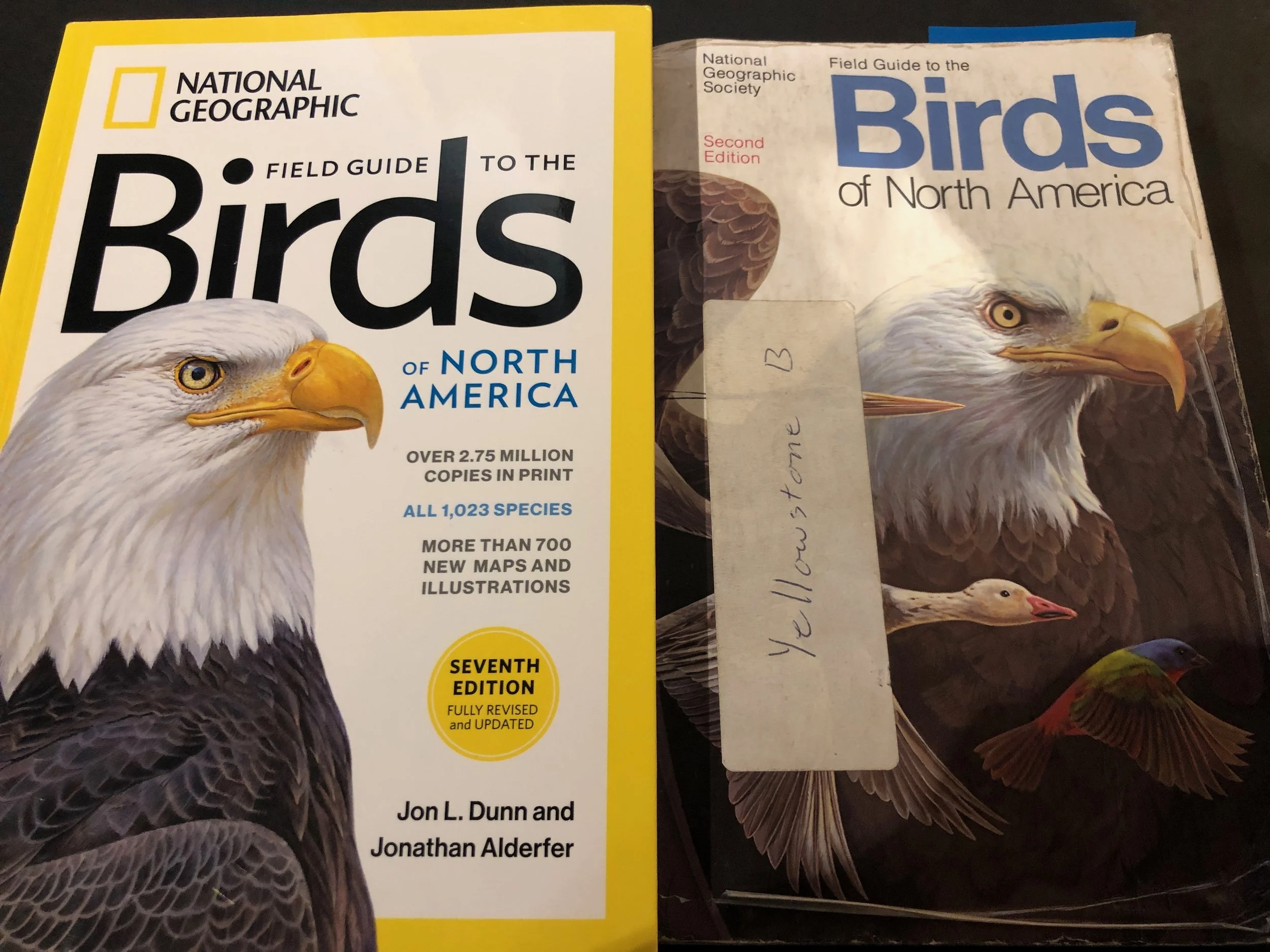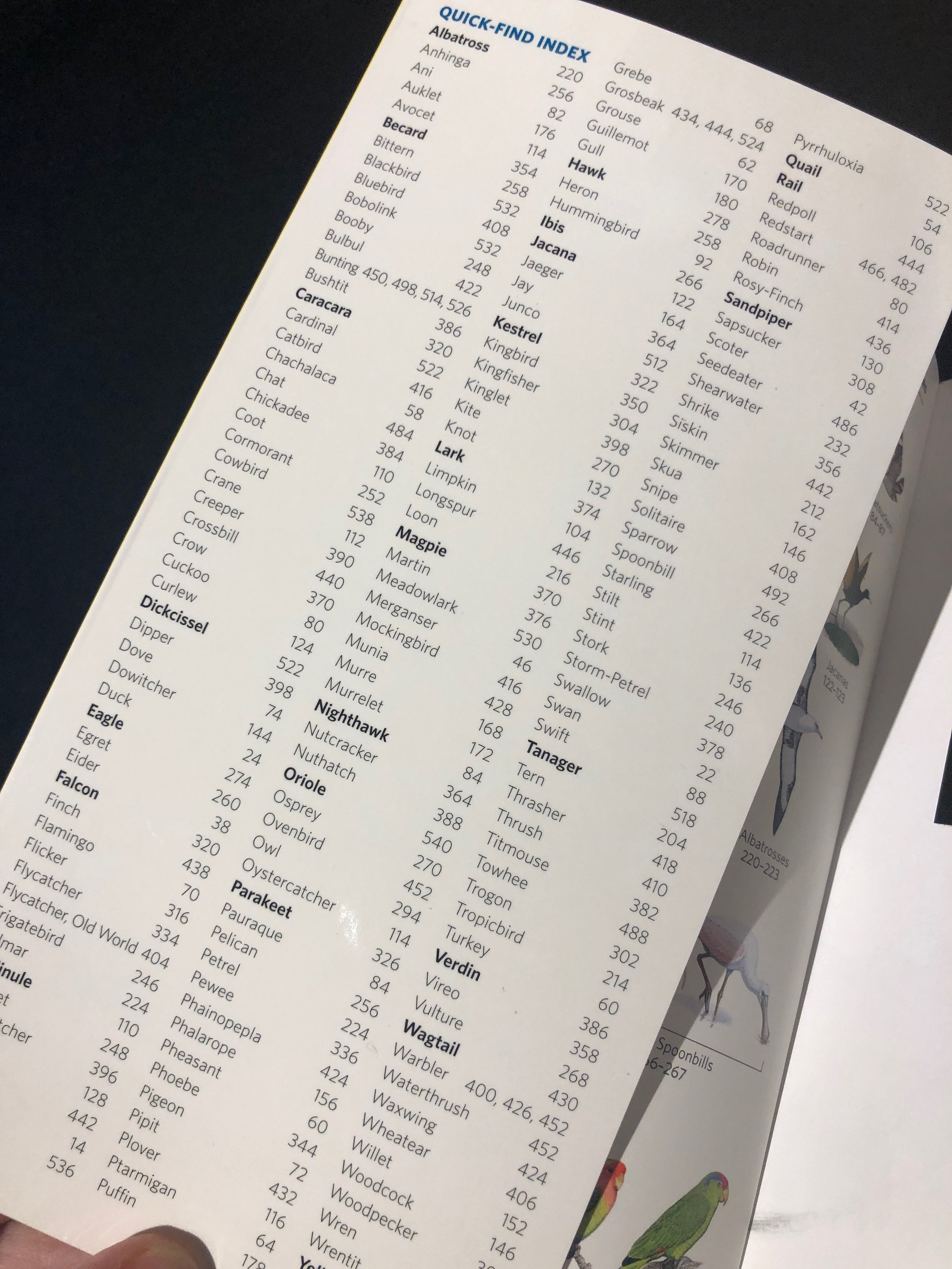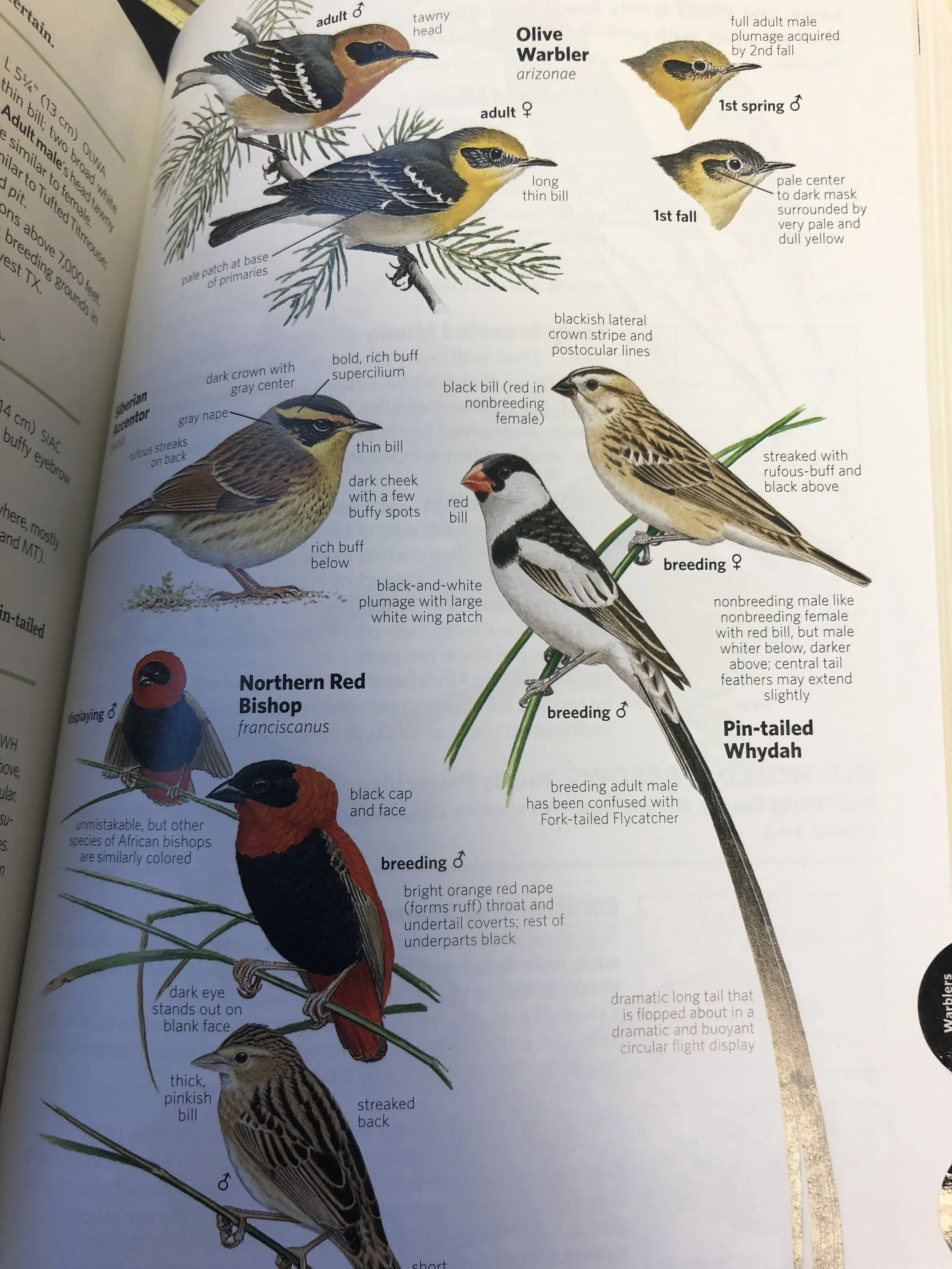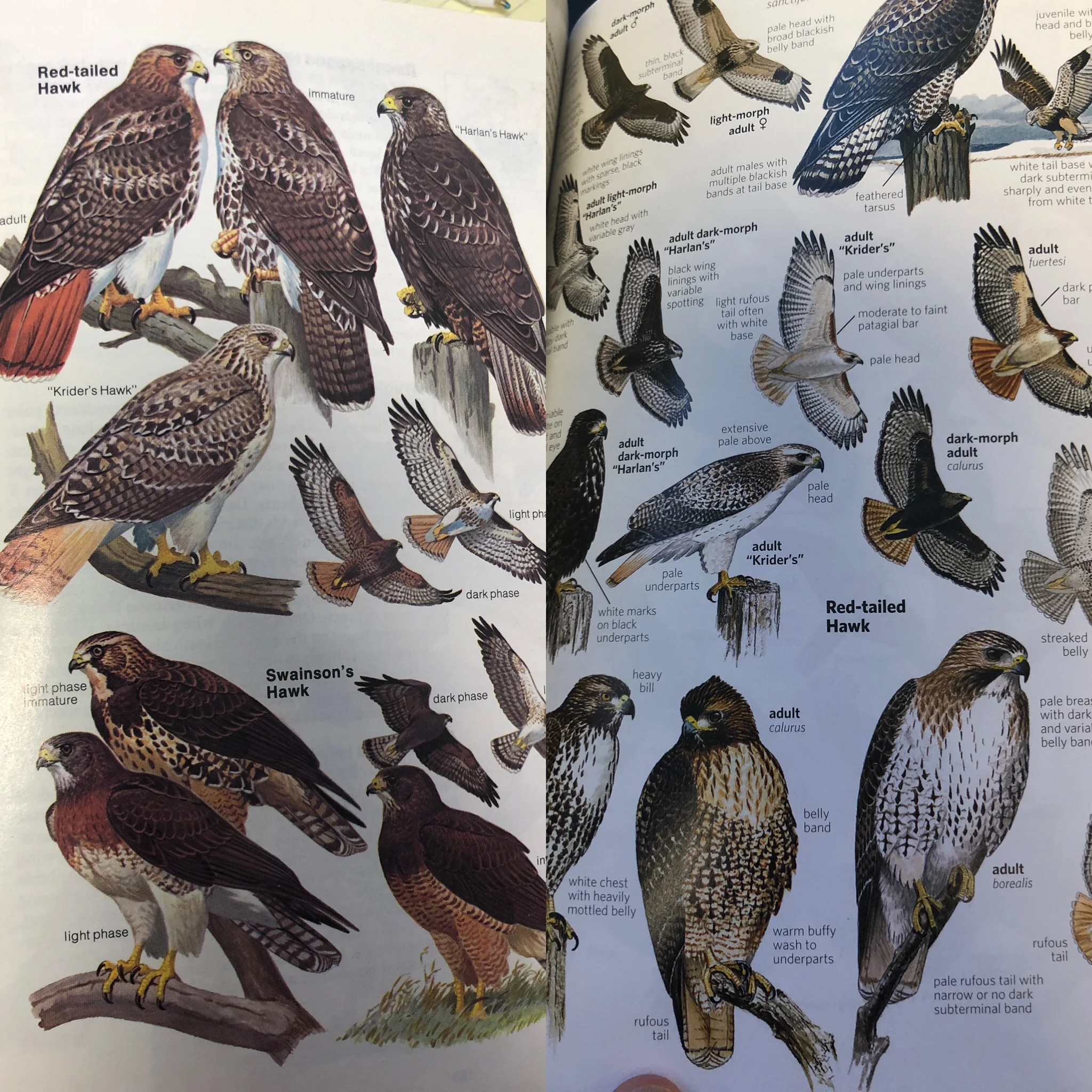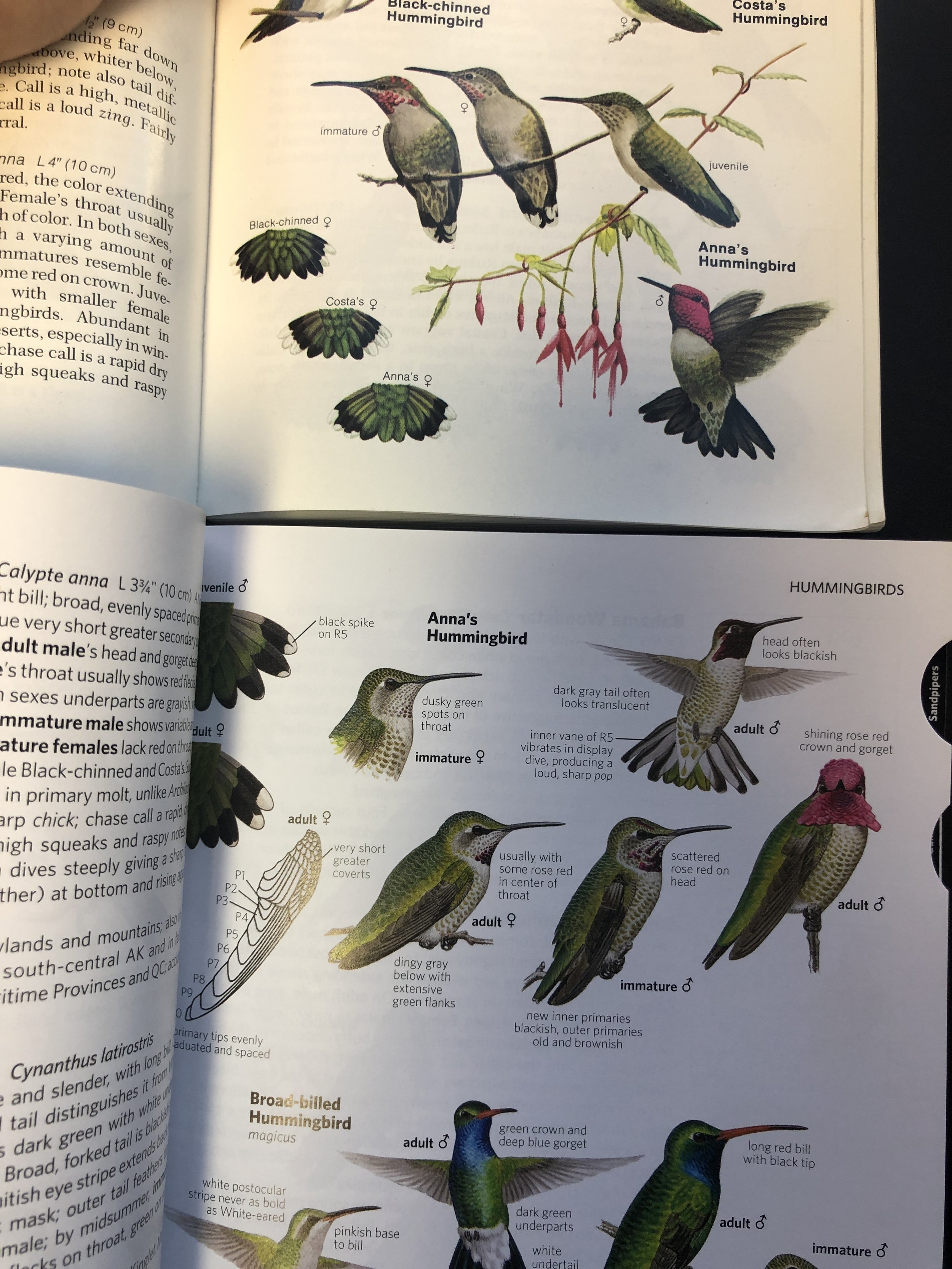On the one hand I’m sad this book is no longer a workable app. On the other hand it is a very fine book and the most recent edition has some great improvements.
I’ve joked before that new editions of field guides can be a bit of a scam since sometimes it’s mostly a taxonomy change or just a few rare bird illustration updates. But I grabbed an old second edition National Geographic from my office to do some comparisons. You can use this to see if you need to get an updated copy. I had a first edition and second edition when I was a kid. I will always have a fondness for these guides. One thing I really like is that the guide gives several options to try an locate a species quickly.
There’s a visual quick reference on both the inside and backside covers so if you know the shape of a bird but not the name you can try and find it faster.
You also have the option of just looking for birds by their names too.
Species-wise there are quite a few additions. I think the second edition has over 800 species. The seventh has 1023 and it’s organized by the American Ornithological Society’s taxonomy structure. About 3500 illustrations have been updated (new additions and diagnostic field marks are added. Maps have also been updated by Paul Lehman and even include some migratory routes. The back of the guide includes a list of extinct birds (Carolina parakeet) or wild card ABA Code 5 rarities that have shown up in the last five years (Amazon kingfisher). I find it interesting that Carolina Parakeet and Bachman’s warbler are in this list but the ivory-billed woodpecker still shares a page with the pileated woodpecker. Hope springs eternal.
Many of the exotics that now have established and sustainable populations in the US like munia and whydah and are considered countable by the ABA are included.
On the left we have the red-tailed hawk/Swainson’s hawk page of the second edition. On the right is the new and improved red-tailed hawk/rough-legged hawk page.
Every hummingbird illustration has been updated. On the top we have the second edition of Anna’s hummingbird and below the seventh edition of Anna’s hummingbird with up to the date field notes to help you separate them from other species of hummingbird.
It’s an excellent field guide to have in your collection. If you have fourth edition or older I would definitely consider upgrading to this copy. And with holidays around the corner, it’s a good gift idea.

